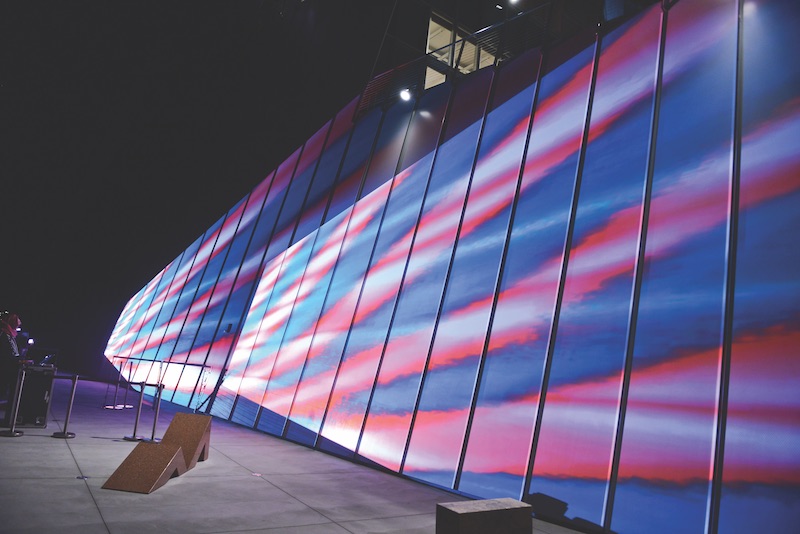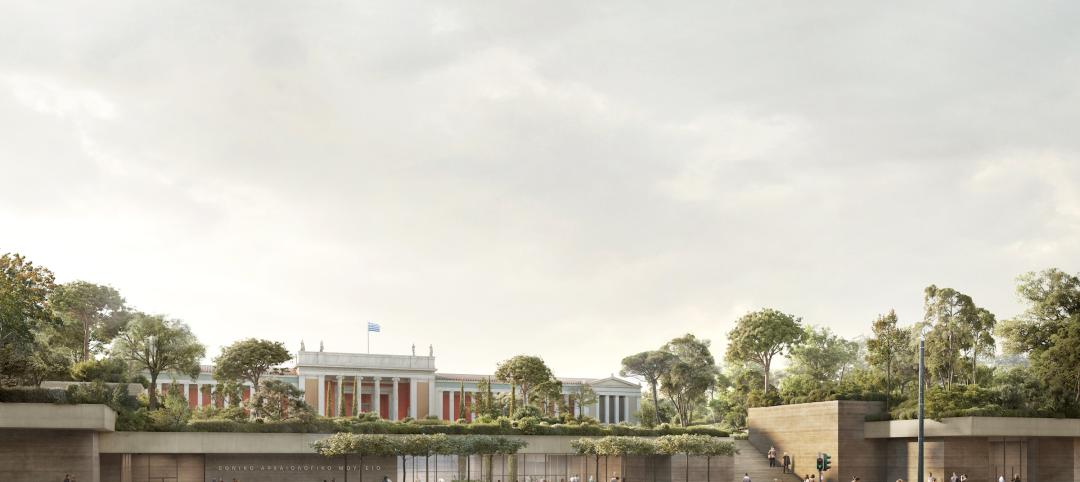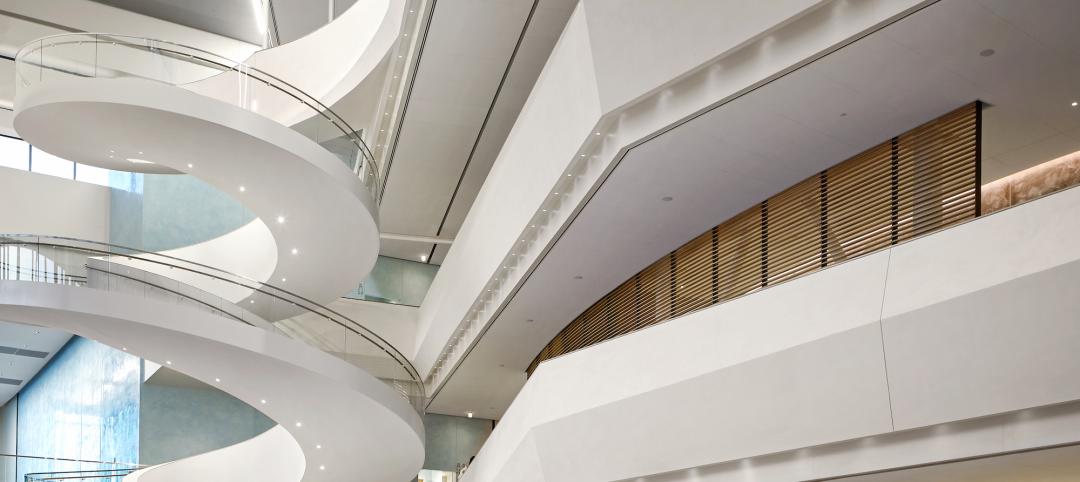Developers and building owners are constantly searching for pathways to extend their buildings to the great outdoors.
Take the case of the iconic Willis Tower in Chicago, whose owners recently announced a $500 million facelift of the nation’s second-tallest building. That renovation will include a 30,000-sf outdoor deck and garden and a new three-story, all-glass structure that will sit on top of the skyscraper’s existing street-level stone plaza. The new design will break the barrier that currently separates the building from the urban streetscape.
Museums are especially keen to use their outdoor areas for exhibits and gathering places for patrons. One such building is the new Whitney Museum of American Art, located between the Hudson River and the High Line in New York’s Meatpacking District.
“There was a strong desire to expand the notion of what the gallery might be,” says Scott Newman, FAIA, Partner at Cooper Robertson, the Whitney Museum’s executive architect. (Renzo Piano Building Workshop was the design architect.)
Newman and his firm’s Senior Associates Greg Weithman, AIA, and Thomas Holtzman recently published a white paper, “Exterior as Gallery,” which details the design and engineering complexities behind the Whitney’s deployment of 13,000 sf of outdoor space and terraces to attract new audiences.
The Whitney engages the High Line’s year-round crowds “with super-scale works of art mounted on its exterior planes,” the authors write.
The museum’s façade consists of seven-inch-thick architectural precast concrete panels—some weighing 20,000 pounds—and a steel-plate-clad unitized curtain wall system. Ultra-clear, low-iron glass walls make the outdoor space an extension of the interior galleries. A dense pattern of stainless steel bolts project half an inch off the face of the building; crews can tether lanyards to the bolts to lock in, level, and stabilize an art installation and platform.
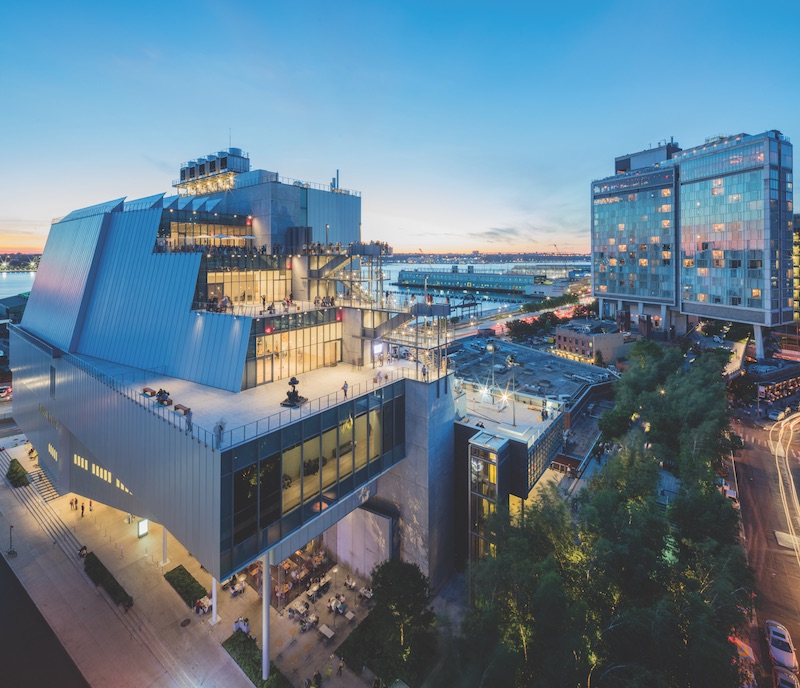 The Whitney project team: Renzo Piano Building Workshop and Cooper Robertson (architects), Robert Silman Associates (SE), Philip Habib & Associates (CE), WTM Engineers (flood mitigation), Jaros, Baum & Bolles (MEP/FP), Heintges (building envelope/curtain wall consultant), Arup (lighting), Mathews Nielson Landscape Architecture, and Turner Construction (CM). Photo: Ben Gancsos.
The Whitney project team: Renzo Piano Building Workshop and Cooper Robertson (architects), Robert Silman Associates (SE), Philip Habib & Associates (CE), WTM Engineers (flood mitigation), Jaros, Baum & Bolles (MEP/FP), Heintges (building envelope/curtain wall consultant), Arup (lighting), Mathews Nielson Landscape Architecture, and Turner Construction (CM). Photo: Ben Gancsos.
Works of art can also be anchored to four art terraces suspended from the façade. The terraces, which are connected by stairs, provide visitors with a variety of vantage points. They also function as party spaces.
To suspend art legally off of the façade that faces the High Line’s Maintenance & Operations Building, the Whitney acquired the air rights of the M&O terrace. To safely anchor art to the museum’s terraces, the project team integrated hardware produced by TriPyramid, which specializes in high-performance yacht rigging.
Newman says it was imperative to integrate the exteriors as gallery space into the façade early in the design process “so it didn’t look like an afterthought.”
He notes, too, that what distinguishes the Whitney from other museums is that its exterior galleries were designed to be flexible enough to house curated exhibits that change over time. That meant taking into account exterior structural loads, lighting, and audio-visual capabilities.
The façade required local structural frame engineering. Robert Silman Associates, the project’s structural engineer, reinforced the structure to handle the addition of a 600-pound pullout load. The terraces have technology consolidation points with company switches for theatrical performances and A/V needs, cable passes for broadcast events, and data receptacles.
As other building typologies, such as hotels, retail, and offices, are programming their outdoor spaces, Newman cautions that it’s critical for owners to keep in mind that “this is a real investment in the initial cost of the building. Owners also need to accept the idea that they are going to have to curate events, or commit to temporary exhibits,” all of which have costs attached to them.
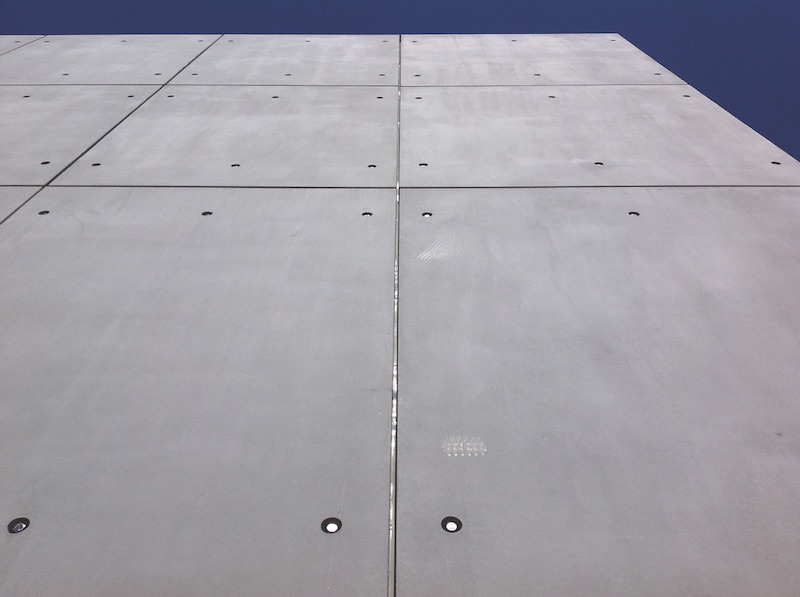 New York’s new Whitney Museum makes full use of its 13,000 sf of outdoor space. Art installations can be moored to the precast concrete panels with integrated bolts and anchors from yacht rigging specialist TriPyramid. Photo: Cooper Robertson.
New York’s new Whitney Museum makes full use of its 13,000 sf of outdoor space. Art installations can be moored to the precast concrete panels with integrated bolts and anchors from yacht rigging specialist TriPyramid. Photo: Cooper Robertson.
Related Stories
Giants 400 | Aug 22, 2023
Top 115 Architecture Engineering Firms for 2023
Stantec, HDR, Page, HOK, and Arcadis North America top the rankings of the nation's largest architecture engineering (AE) firms for nonresidential building and multifamily housing work, as reported in Building Design+Construction's 2023 Giants 400 Report.
Giants 400 | Aug 22, 2023
2023 Giants 400 Report: Ranking the nation's largest architecture, engineering, and construction firms
A record 552 AEC firms submitted data for BD+C's 2023 Giants 400 Report. The final report includes 137 rankings across 25 building sectors and specialty categories.
Giants 400 | Aug 22, 2023
Top 175 Architecture Firms for 2023
Gensler, HKS, Perkins&Will, Corgan, and Perkins Eastman top the rankings of the nation's largest architecture firms for nonresidential building and multifamily housing work, as reported in Building Design+Construction's 2023 Giants 400 Report.
Architects | Jun 6, 2023
Taking storytelling to a new level in building design, with Gensler's Bob Weis and Andy Cohen
Bob Weis, formerly the head of Disney Imagineering, was recently hired by Gensler as its Global Immersive Experience Design Leader. He joins the firm's co-CEO Andy Cohen to discuss how Gensler will focus on storytelling to connect people to its projects.
Museums | Feb 22, 2023
David Chipperfield's 'subterranean' design wins competition for National Archaeological Museum in Athens
Berlin-based David Chipperfield Architects was selected as the winner of the design competition for the new National Archaeological Museum in Athens. The project will modernize and expand the original neoclassical museum designed by Ludwig Lange and Ernst Ziller (1866-1874) with new spaces that follow the existing topography of the site. It will add approximately 20,000 sm of space to the existing museum, as well as a rooftop park that will be open to the public.
Giants 400 | Feb 9, 2023
New Giants 400 download: Get the complete at-a-glance 2022 Giants 400 rankings in Excel
See how your architecture, engineering, or construction firm stacks up against the nation's AEC Giants. For more than 45 years, the editors of Building Design+Construction have surveyed the largest AEC firms in the U.S./Canada to create the annual Giants 400 report. This year, a record 519 firms participated in the Giants 400 report. The final report includes 137 rankings across 25 building sectors and specialty categories.
Giants 400 | Feb 1, 2023
2022 Cultural Facilities Giants: Top architecture, engineering, and construction firms in the U.S. cultural facilities sector
Populous, DLR Group, KPFF, Arup, and Turner Construction head BD+C's rankings of the nation's largest cultural facilities sector architecture, engineering, and construction firms, as reported in the 2022 Giants 400 Report. Building types include museums, public libraries, performing arts centers, and concert venues.
Museums | Jan 18, 2023
Building memory: Why interpretive centers matter in an era of social change
The last few years have borne witness to some of the most rapid cultural shifts in our nation’s long history. If the experience has taught us anything, it is that we must find a way to keep our history in view, while also putting it in perspective.
Giants 400 | Aug 22, 2022
Top 90 Construction Management Firms for 2022
CBRE, Alfa Tech, Jacobs, and Hill International head the rankings of the nation's largest construction management (as agent) and program/project management firms for nonresidential and multifamily buildings work, as reported in Building Design+Construction's 2022 Giants 400 Report.
Giants 400 | Aug 19, 2022
2022 Giants 400 Report: Tracking the nation's largest architecture, engineering, and construction firms
Now 46 years running, Building Design+Construction's 2022 Giants 400 Report rankings the largest architecture, engineering, and construction firms in the U.S. This year a record 519 AEC firms participated in BD+C's Giants 400 report. The final report includes more than 130 rankings across 25 building sectors and specialty categories.


